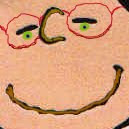The ABC’s of Color Theory & Color Management
The Primary Colors
- Red
- Green
- Blue
- Cyan
- Yellow
- Magenta
- (K)
The 3 Dimensions of Color
- Hue-The Color
- Saturation-The Intensity
- Brightness-Value-Light/Dark
A Three Dimensional Color Wheel

the TRUE MATCH COLOR WHEEL
3 Factors in Managing Color:
The Image
The Paper
The Printer
The Image
Adjusting the color quality of the image.
a. Adjust directly:
i. on site with your camera
b. Adjust indirectly:
i. from the menu bar: image/adjustment
ii. or in the layers pallete with an adjustment layer.
The Paper
Change the paper type you are using
Glossy vs Matte…
The Printer
Adjustments to your printer
Clean the heads
Calibrate your printer to the monitor
Change printers
Fill the ink
CS3 “Print” Window
Synchronizes
The image---The paper---The printer
&
Soft Proofs
3 Factors in Managing Color:
1) The image
2) The paper
3) The printer
1) Adjusting the color quality of a printed image.
a. Adjust directly: menu bar: image/adjustment/…
b. Adjust indirectly as an adjustment layer.
2) Change the paper type you are using
a. Glossy vs Matte…
- (A common inkjet printer paper is the Epson Matte-Heavyweight)
3) Adjustments to your printer
a. Clean the heads
- (run a test first)
b. Calibrate your printer to the monitor
- (Custom Color Profiles)
c. Change printers
CS3 PRINT WINDOW
Synchronizes: 1) The image. 2) The paper 3) The printer
Soft Proofing
for more info on Color Management










